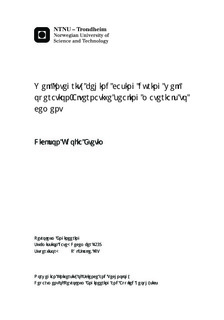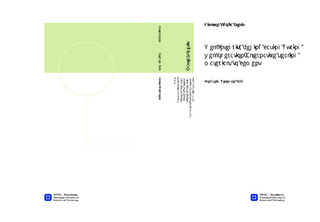| dc.description.abstract | Maintaining well integrity during all well operations has become a major concern for operators worldwide. The maintenance of an increasingly aging well stock and the higher cost associated with new wells makes well integrity a critical element of asset lifecycle management. Factors such as wellbore instability, corrosion, cement bond deterioration, expansion/contraction, and changing pressure envelopes to name a few, all contribute to compromised well integrity. Therefore, assessing the integrity of existing wellbores is crucial for optimizing productivity and adding value. For an oil/gas well to maintain its integrity and be produced effectively and economically, it is pertinent that a complete zonal isolation is achieved through out the life of the well. This complete zonal isolation, however, can be compromised due to factors that come into play during the operative life of the completed well. There has been a lot of research and experimental investigations in the area of well cement design and this has led to improved cement designs and cementing practices but yet many cement integrity problems persist and this further strengthens the need to evaluate alternative sealing materials to cement. This thesis work describes the process criteria and consideration of design of wellbore seals to establish well integrity behind casing. In order to improve the primary cementing, alternative materials to cement was evaluated. An assessment of ThermaSet and Sandaband was conducted with the emphasis on applicability, placement and zonal isolation.The assessment of the materials showed potential in both Sandaband and ThermaSet. Even though both materials had properties which made them good for long lasting isolation, cement will still be the only material for cementing in the near future. This is because of the superior ability to support the casing, the diversity of cement, low cost of the material and due to the state of the industry. The property of the alternative materials makes them possible candidates for future corrosion and temperature fluctuating wells. Sandaband can also be used as isolation behind the casing in shallow gas wells. The usage of Sandaband will be limited to simple well solution because of the complexity of the operation. ThermaSet is currently too expensive, and there are too many untested issues related to it as a primary cementing material. It is recommended that the design and material selection for sealing casing in wellbores be site specific. Evaluation of sealing effectiveness should be made on the entire seal system i.e. seal, seal-rock interface and the surrounding rock. Consequently, the experimental work presents a detailed investigation of the physical and chemical capabilities of barite loaded mud as a reliable alternative to cement as a sealing material. In order to verify how capable barite loaded mud is as an alternative to cement, a laboratory experiment that gave data as to the shear strength of the mud, how it could be handled to ensure that a long plug with high solids concentration is created, its gel strength, its density, setting time, filtration rate, and rheological parameters were studied. Comparisons were made of the test result with the properties of Portland cement. The test results showed slight agreement with the published properties of Portland cement. The results obtained from the study show that: At low mud rheology, barite loaded mud is pump-able since it pumps with gear pump at reduced pressure; too much water lowers slurry viscosity. This makes it easier to pump; however, it may lead to the following objectionable characteristics: longer setting time, reduction in ultimate strength of the cementing material. The effective density of a suitable barite loaded mud that can be used as a reliable alternative to Portland cement is 1.28kg/litre. | nb_NO |

